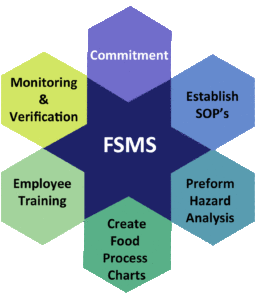Have you ever noticed your bartender doing some unsafe practices when making your drink and thought, “It’s cool the alcohol will kill it!”.
You may be onto something when it comes to bacteria. Certain amounts of alcohol can kill the bad stuff in our gut! But wait, there is something you should know.
Although wine and spirits have long been used for their alcohol properties to kill bacteria on surfaces you would need to consume a high enough percentage of well over the average mixed drink of 10% alcohol to prevent bacteria from causing foodborne illness in your gut. The most effective would be in the 80% range, which would be most spirits drank straight. The bad news is the damage you would do to your gastrointestinal system could cause vomiting, diarrhea, and organ damage. One study did find that drinking one glass a red wine a day can be good for your gut. The specific properties of wine seem to be just right to keep the bad bacteria at bay while not destroying the good bacteria and not doing damage to your organs.
Looks like using alcohol to kill bacteria isn’t such a good idea. The news is no better when looking at the effect of alcohol on Norovirus. Alcohol will not kill Norovirus. That is right. You heard it here. Alcohol will not kill Norovirus.
In 2017, there was a total of 841 reported cases of illness from drinking beverages in a restaurant. 623 cases were from Norovirus. Norovirus is a virus that only needs about 10-12 cells to make you sick. It grows in your gut, not on food.
Okay, I can hear you thinking, “841 cases that is it? I will roll the dice!”. The problem is that most illnesses do not get reported. Think about it, do you report to the health department every time you get vomiting and diarrhea? NO! The actual number of cases is much higher.
So how can a beverage become contaminated with Norovirus or bacteria? It can all go back to the bartender.
Bartenders handle money, touch surfaces other guest touch and, quite frankly, hardly ever wash their hands.
These surfaces can contain microscopic fecal matter from customers that do not wash hands after using the restroom. That fecal matter can then be transferred to your drink! YUCK!
Have you ever witnessed your bartender making any of these mistakes?
- Picking up the glass from the rim and not side of cup, then you drink from the rim.
- Placing things in the ice bin that are not ice, like opened beer, mixers, cups or hands.
- Scooping the glass through the ice, this is a big risk of the glass or plastic cup chipping and causing physical harm.
- Items falling in the ice bin. I once saw a customer toss a soiled napkin, missing the trash can it went into the ice bin, the bartender picked it out and went on their way to making a drink.
- Handling garnishes like lemons, oranges, limes, melon and cucumbers with dirty hands. Tongs and muddler should be used!
Remember all this can spread those nasty feces and cause you to have vomiting and diarrhea. So maybe it wasn’t the food you at the establishment after all…


